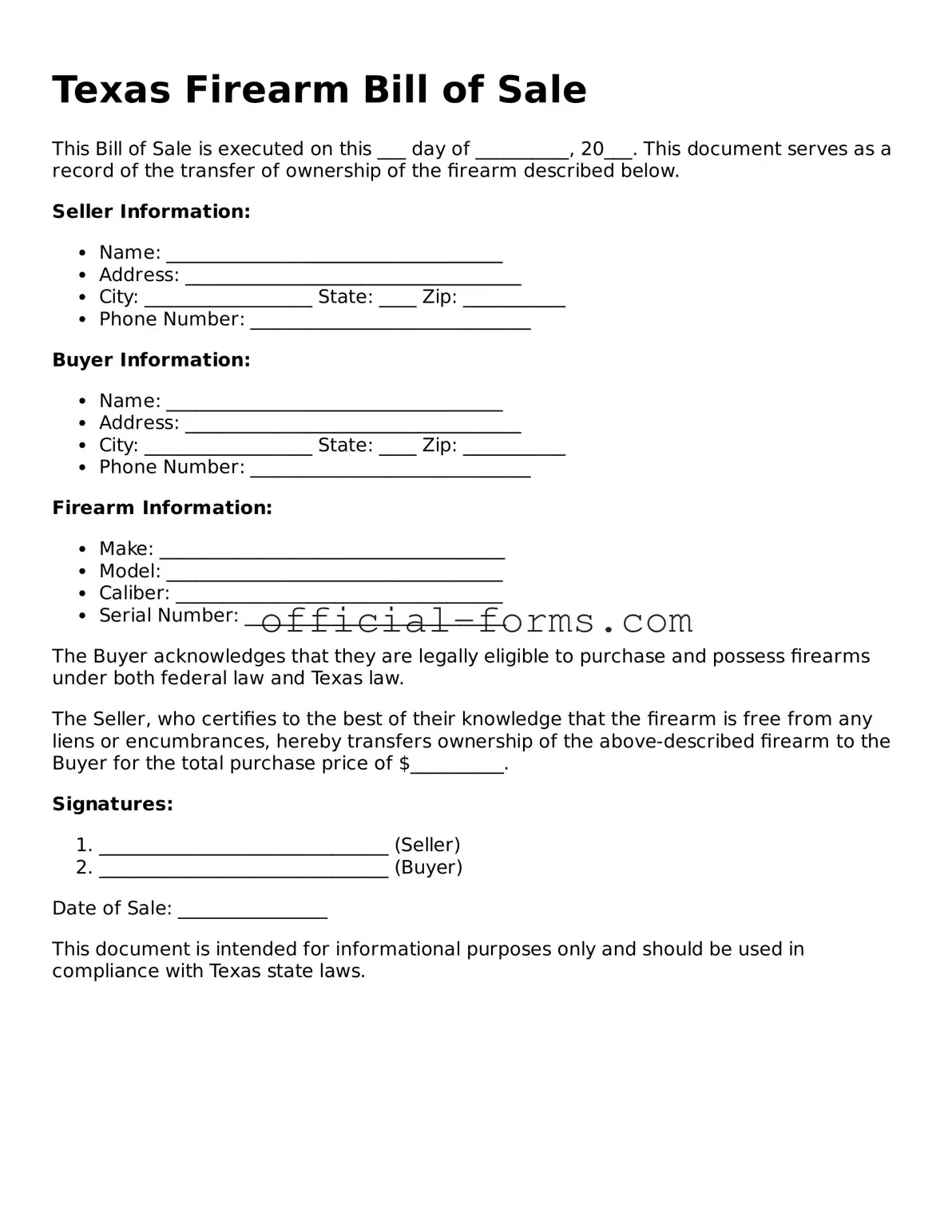In Texas, the Firearm Bill of Sale form serves as an essential document for individuals engaged in the private sale or transfer of firearms. This form not only provides a written record of the transaction but also helps ensure compliance with state laws regarding firearm ownership. Key components of the form include details about the buyer and seller, such as names, addresses, and identification information, which help establish the identities of both parties involved. Additionally, the form typically outlines the specifics of the firearm being sold, including its make, model, caliber, and serial number, which are critical for tracking ownership and verifying the legality of the sale. By documenting the transaction, this form protects both parties by providing a clear account of the sale and serves as a safeguard against potential legal issues that may arise in the future. Understanding the significance of this document is vital for anyone looking to buy or sell a firearm in Texas, as it not only fulfills legal requirements but also promotes responsible ownership and transfer practices.
